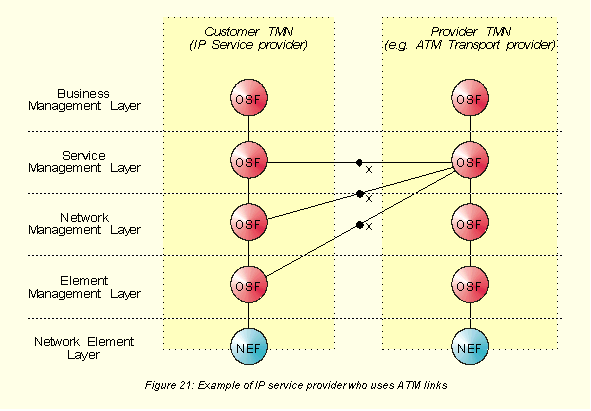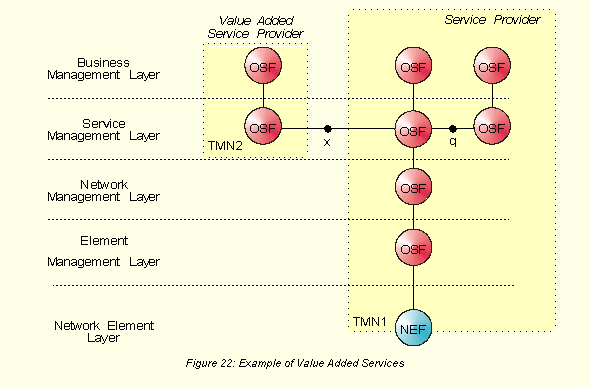Service Management may be useful in many cases.
A first case is the example in which two operators exchange management information to manage their interconnected networks (inter-operator management). For commercial and security reasons each of these operators will try to hide the internal structure of its network from the other operator; only those pieces of management information that are absolutely necessary will be exchanged. An example of such information may be Quality of Service figures.
A second case is the example where an operator who provides end-to-end transport services uses the network of another operator to connect its network elements. A typical example is an IP service provider, who uses ATM (or SDH or DWDM) links of other operators to connect its IP routers. This case is shown in Figure 21. In this figure there are three x-reference points from the IP service provider to the ATM service provider. At the side of the ATM service provider, all reference points are connected to the service management layer, since this service provider will not allow the IP service provider to monitor and modify the internals of its ATM network; only high level information like Quality of Service figures will be made available. For the IP service provider the ATM link can be seen as a single element in its IP network; this explains the reference point at the element management layer. In case the IP service provider has the option to choose alternative routes around the ATM link, there will also be a reference point at network management level. Finally the performance of the ATM link may impact the Quality of Service of the entire IP network; in this case there may be also be a reference point at service management level.

A third case is the example where an operator should exchange management information with customers (customer network management). Again the operator will try to hide the internal structure of its network from the customer, and allow the customer only access to high level information. Possible management interactions may be the provision of QoS figures by the operator or the modification of the members of a closed user group by the customer.
A fourth case is the example of Value Added Services (VAS). In this case one OSF may be responsible for management of the VAS and another OSF may be responsible for management of the telecommunications network that must be traversed to use the service. Both OSFs must be able to communicate with each other. If these OSFs belong to the same TMN (administration), communication is realized over a q reference point. If both OSFs belong to different TMNs, the x reference point will be used (Figure 22).
